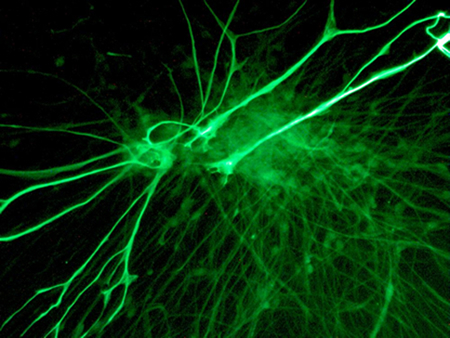The secret of the world – new theory explains puzzles of science

We think everything is an accident of physics, but a long list of experiments suggests just the opposite. Amazingly, if you add us to the equation, you can explain some of the biggest puzzles of science. For instance, it becomes clear why space and time – and even the properties of matter itself — depend on the observer. It also becomes clear why the laws of the universe are fine-tuned for the existence of life. Until we recognize the universe in our heads, attempts to understand the world will remain a road to nowhere.
Consider the weather ‘outside.’ You see a blue sky, but the cells in your brain could be changed so the sky looks green or even red. In fact, with a little genetic engineering everything that’s red could probably be made to vibrate or make a noise, or even make you want to have sex like with some birds. You think its bright out, but your brain circuits could be changed so it looks dark out. You think it feels hot and humid, but to a tropical frog it would feel cold and dry. This logic applies to virtually everything. Bottom line: What you see and experience couldn’t be present without your consciousness.
Consider the famous two-hole experiment. When scientists watch a particle pass through two holes in a barrier, the particle behaves like a bullet and goes through one hole or the other. But if you don’t watch, it acts like a wave and can go through both holes at the same time. So how can a particle ‘out there’ change its behavior depending on whether you watch it or not? Answer: Reality is a process that involves your consciousness.
Our view of the world is much the same as a squirrel. It opens its eyes and the acorn is just miraculously there – it grabs it and scurries up the tree without further thought. We humans are the same — we wake up in the morning and think the world is just magically there. But the experimental findings of quantum theory show that not a single particle exists with real properties if no one is observing.
Wave your hand through the air. If you take everything away, what’s left? The answer is nothing. The same thing applies for time – you can’t put it in a test tube like distilled water. Look at anything – say this page. You can’t see anything through the bone that surrounds your brain. No, everything you see right now is a whirl of information occurring in your mind. According to Biocentrism, space and time aren’t objects – they’re the mind’s tools for putting everything together. In fact, even in dreams your mind is able to construct a 3D reality (as real as the one you’re experiencing right now) out of pure information. That’s why, in real experiments, particles separated by large distances seem to be instantaneously connected (faster than the speed of light) as if there was no space or time between them.
The structure of the universe itself also supports biocentrism. It has a long list of traits that make it appear as if everything was tailor-made just for us. For instance, if the Big Bang was just one part in a million more powerful, the cosmos would have blown outward too fast for galaxies and stars to form. Result: no us. Or if gravity was a hair less, stars (and the Sun) wouldn’t ignite. There are over 200 parameters so exact that it strains reason to think they are random. Tweak any of them and you never existed. None of them are predicted by any theory and they all seem carefully chosen to allow for life. The only rational explanation is biocentrism, which explains how reality is a process that involves us – our consciousness. Subject and object can’t be split or the reality is gone.
This is the basis of Heisenberg’s famous uncertainty principle, which is built into the fabric of reality. If there’s really a world out there with particles just bouncing around, then we should be able to measure all their properties, right? But you can’t. For instance, a particle’s exact location and momentum can’t be known at the same time. So why should it matter to matter what you decide to measure? Consider a movie of an archery tournament. If the projector stopped on a single frame, you’d know the position of the arrow with great accuracy. But it’s going nowhere — its velocity is no longer known. This is the fuzziness described by the uncertainty principle: sharpness in one parameter causes blurriness in the other. That’s because everything we perceive is actively being reconstructed in our heads. Time is simply the summation of the ‘frames’ occurring in the mind. But that doesn’t mean there’s an invisible matrix called time. That’s just our way of making sense of things.
The same thing applies for space. You can’t pick it up and bring it to the lab like an insect in a collection jar. It’s not a thing or object, but rather part of our mental software. We think space is an empty container with no walls. But this is false. Consider relativity: The distance between two objects, say, my lab and your house, could be an inch or a thousand miles depending on conditions like gravity and velocity. If there are no absolute distances between objects, then our idea of space is just that – an idea.
Space and time belong to us, not to the physical world. Emerson was right: “If, instead of identifying ourselves with the work, we feel that the soul of the workman streams through us, we shall find the peace of the morning dwelling first in our hearts, and the fathomless powers of gravity and chemistry, and, over them, of life, pre-existing within us in their highest form.”